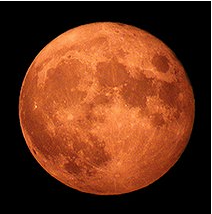Autumnal Equinox takes to the skies
September 24, 2021

For many, the coming of fall means football games, flannels, pumpkin spice and halloween. But the onset of “spooky season” is more than meets the eye. In fact, fal is more than changing leaves, because the changes for the season go all the way to outer space.
Jared Metz, a senior and the President of the Ashland University Astronomy Club is educating students about this annual change that occurs in the galaxy every year.
“The Autumnal Equinox is…the scientific term for the first day of fall,” Metz said. “It alternates between Sept. 22 an sept. 23 depending where the cycle is between the Earth and the Sun.”
As time goes by the earth orbits the sun and rotates on its axis. Due to the tilt, seasons are created and allow events, such as equinoxes in the spring and fall to occur.
“On the equinox, we have equal day and equal night so that’s when we can start expecting all of our days to get shorter and to get darker a lot sooner,” Metz said. “This is just the equal amount of 12 hours or light and 12 hours of dark that will get shorter and shorter until the equinox.”
According to NASA, “From now until the beginning of spring, nighttime hours will last longer than daylight as the Sun travels a shorter arc across the sky each day.”
The whole process will repeat itself after the winter solstice–the shortest day of the year– through the spring equinox where the days and nights will be even again in preparation for summer.
With the passing of this astronomical event earlier this week, the AU Astronomy Club had a presentation on the equinox and how it works as well as the effects of it we can see.
“I gave a few examples of how the logistics work and a few short videos to try and [help] everyone understand,” Metz said. “The Harvest Moon is directly tied to the Autumnal Equinox and so we talked a little bit about the Harvest Moon as well.”
The Harvest Moon marks the days before the equinox and the name comes from its orange tint it has from being closer to the horizon, and because it would provide more light later into the night farmers, Metz added.
As fall weather moves in, people think mostly about pumpkins and halloween, but there are things lightyears away that make fall what it is known to be.
“It’s just a really cool thing that we have seasons in the world,” Metz said. “If we didn’t have an axis tilt, everything would be exactly the same.”


